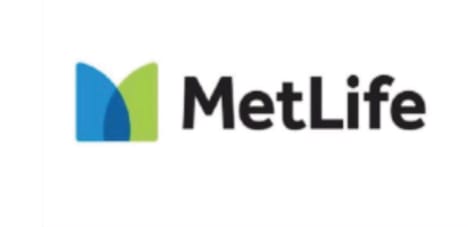
Introduction
The global insurance industry is undergoing an unprecedented shift challenged by rising competition, volatile economic conditions, increasing cost pressures, and rapidly evolving customer expectations. Digital-native insurtech startups are disrupting legacy business models, offering seamless digital onboarding, real-time claims management, and hyper-personalized services. At the same time, policyholders are demanding faster, more intuitive, and transparent experiences, especially in a post-pandemic era where digital convenience has become the norm.
According to McKinsey & Company (2023), insurers that digitize their core operations can reduce service costs by up to 40%, while increasing customer satisfaction and agility. However, traditional insurers often face legacy infrastructure, siloed data, and cultural inertia that limit transformation speed.
This is where emerging technologies are reshaping the future of insurance:
Cloud computing provides scalable infrastructure and accelerates product deployment across channels.
Artificial Intelligence (AI) and machine learning enable predictive underwriting, automated fraud detection, and real-time risk assessment.
Blockchain enhances security, claims transparency, and multi-party coordination without intermediaries.
Internet of Things (IoT) supports real-time monitoring of insured assets, allowing dynamic pricing and preventive servicing.
Augmented and Virtual Reality (AR/VR) open new possibilities for customer education, virtual consultations, and immersive onboarding.
For over 155 years, MetLife has been a pillar of the global insurance industry, serving over 100 million customers in nearly 40 markets worldwide. Ranked among the top life insurance providers in the U.S. and globally, MetLife is known for its financial stability, customer trust, and broad product portfolio. Yet, in this digital era, legacy strength alone is no longer enough. To remain competitive and continue leading, MetLife must evolve not only by adopting new technologies, but by reimagining its business model, culture, and customer experience.
This strategic business plan presents a comprehensive roadmap for MetLife to harness the full potential of emerging technologies, drive sustainable growth, enhance customer loyalty, and streamline internal operations. By leveraging innovation and aligning internal capabilities with market demands, MetLife can set a benchmark for digital excellence in insurance turning disruption into long-term differentiation.
Vision, Mission, and Values
1. Current Statements (as of 2024)
MetLife Vision: “To build a more confident future for our customers.”
MetLife Mission: “At MetLife, we’re committed to building a more confident future by helping people pursue more from life with insurance, annuities, employee benefits and asset management.”
MetLife Values (from official website and ESG reports):
Put Customers First
Be the Best
Make Things Easier
Succeed Together
Own It
2. Critique of Current Statements
Clarity: Both statements are clear and emotionally appealing.
Limitation: They do not explicitly address technology, innovation, or digital transformation, which are crucial for long-term competitiveness.
Relevance: While the vision emphasizes confidence and the mission emphasizes service breadth, they lack future-forward, data-driven, or customer-experience transformation language.
3. Proposed Vision, Mission & Values for a Tech-Enabled Future
Updated Vision (Future-Oriented, Non-Financial, Ambitious)
“To empower every customer to live with confidence through intelligent protection, personalized experiences, and seamless digital solutions.”
Retains emotional appeal (“confidence”)
Adds technology and personalization as pillars
Projects ambition and future-readiness
Updated Mission (Operational, Customer-Centric, Digital-Aware)
“MetLife’s mission is to deliver trusted financial protection and well-being through innovative technology, human empathy, and seamless experiences — empowering people and businesses to navigate life with clarity and confidence.”
Introduces innovation and empathy together
Reflects the role of emerging tech (AI, cloud, automation)
Includes both individuals and businesses (B2B & B2C positioning)
Updated Values (Blending Legacy with Digital Culture)
Value Type
Proposed Values
Core Values
1. Customer-First Innovation2. Integrity in Every Interaction3. Simplify, Then Scale
Progressive Values
4. Data with Empathy5. Learn Fast, Improve Faster
Shadow Values
6. Challenge the Status Quo (positive disruptor mindset)7. Break Silos, Build Bridges
Explanation:
“Data with Empathy” bridges AI/automation with customer emotion
“Learn Fast, Improve Faster” supports agile methods
“Challenge the Status Quo” encourages internal innovation
“Simplify, Then Scale” helps remove legacy friction
External Environment Assessment
PESTEL Analysis – MetLife (2024)
1. Political Factors
Key Trends/Impacts
Strategic Implications for MetLife
Rising regulation on data privacy (e.g., GDPR, CCPA)
Increased compliance costs for AI, cloud, and blockchain
Government support for fintech/insurtech
Opportunity to collaborate with tech startups or ecosystems
Cross-border insurance regulations tightening
Complicates cloud/data centralization in global ops
Political instability in emerging markets
Risk for investments in regions like LATAM or Africa
2. Economic Factors
Key Trends/Impacts
Strategic Implications for MetLife
Global inflation and interest rate volatility
Impacts customer affordability and investment income
Economic slowdown in key markets (e.g., EU, China)
Reduced demand for certain insurance products
Growth in gig economy and non-traditional workers
Opportunity to create flexible, digital-first microinsurance
Shift toward value-for-money policies
Need to emphasize digital efficiency and self-service
3. Social Factors
Key Trends/Impacts
Strategic Implications for MetLife
Aging populations in developed economies
Demand for annuities, health coverage, and retirement plans
Gen Z/Y expecting digital-first and personalized CX
Urgency for mobile-first, AI-driven CX
Declining customer trust in traditional finance
Brand transparency, digital ethics, and loyalty matter more
Remote work & mental wellness focus
Growth in employee benefits and insurtech partnerships
4. Technological Factors
Key Trends/Impacts
Strategic Implications for MetLife
Rise of AI, cloud, blockchain, and IoT
Enablers of personalization, efficiency, and fraud reduction
AR/VR adoption in financial services
Immersive onboarding, education, and virtual consultations
RPA (robotic process automation)
Automates claims, underwriting, and policy processing
API-driven ecosystems
Enables partnerships with banks, fintechs, and healthtech
5. Environmental Factors
Key Trends/Impacts
Strategic Implications for MetLife
ESG (Environmental, Social, Governance) investing rise
Must integrate ESG metrics in portfolios and operations
Climate change driving natural disasters
Higher claims in property/life insurance → risk modeling
Push for carbon-neutral operations
Digitization reduces paper use and physical branch overhead
Customer interest in ethical companies
Transparency and green reporting become competitive levers
6. Legal Factors
Key Trends/Impacts
Strategic Implications for MetLife
Data protection laws (e.g., GDPR, Egypt’s data law)
Demands rigorous cloud governance and customer consent flows
AI regulation (e.g., EU AI Act in 2025)
AI models must be explainable and bias-free
Changing insurance compliance regimes (by country)
Need for flexible, scalable compliance automation systems
Litigation risk for data breaches or unfair pricing
Must build AI ethics, auditability, and pricing transparency
PESTEL Summary for MetLife
MetLife operates in a complex, fast-shifting macro environment:
Political & legal forces are increasing compliance pressure, especially in digital data use.
Economic & social forces are driving new expectations for personalization, trust, and affordability.
Technology offers significant upside — cloud, AI, AR/VR, blockchain can transform customer experience, reduce claims costs, and unlock new markets.
Environmental and ESG demands require insurers to act ethically, transparently, and sustainably.
External Environment Assessment
Porter’s Five Forces Analysis – MetLife (2024)
1. Rivalry Among Existing Competitors
Force Level: High
Key Insights:
The insurance industry is saturated with global players (e.g., Prudential, AIA, Allianz, AXA).
Price competition and product commoditization are intense.
Digital-native players and insurtech startups offer leaner, faster services.
Differentiation is increasingly based on CX, digital tools, and speed of service.
Strategic Implication for MetLife: MetLife must compete on customer experience, technology-driven personalization, and trust, not just price.
2. Threat of New Entrants
Force Level: Moderate to High
Key Insights:
Insurtech startups like Lemonade, Root, and NEXT Insurance are entering with VC funding, agility, and data-centric platforms.
Regulatory complexity offers some protection, but digital platforms lower entry barriers.
Open banking, embedded insurance (e.g., via ecommerce), and platform-based models are growing.
Strategic Implication for MetLife: Leverage its global brand and regulatory expertise while building API-ready platforms and fast product iteration to stay ahead of agile newcomers.
3. Threat of Substitutes
Force Level: Moderate
Key Insights:
Alternative financial services (e.g., robo-advisors, investment apps) offer partial substitutes for savings/investment-linked insurance.
Government healthcare systems can reduce need for private health insurance in some markets.
Peer-to-peer insurance and blockchain-based mutual models are emerging.
Strategic Implication for MetLife: Diversify offerings with wellness programs, financial coaching, and value-added services that go beyond traditional insurance.
4. Bargaining Power of Buyers (Customers)
Force Level: High
Key Insights:
Customers are more informed, price-sensitive, and expect real-time service.
Digital platforms and aggregators increase transparency and comparability.
Loyalty is declining unless companies deliver consistent, personalized, and digital-first experiences.
Strategic Implication for MetLife: Build data-driven personalization, loyalty ecosystems, and omnichannel customer support to retain and grow its user base.
5. Bargaining Power of Suppliers (Tech, Talent, Data Providers)
Force Level: Moderate to High
Key Insights:
Key dependencies on cloud vendors (e.g., AWS, Azure), cybersecurity firms, and insurtech partnerships.
Talent wars in AI, blockchain, cybersecurity, and CX design increase cost and turnover.
Data partnerships (healthcare, IoT) are becoming core to pricing and innovation.
Strategic Implication for MetLife: Develop strategic tech alliances, build in-house digital talent pipelines, and invest in supplier diversity and governance.
6. Complementors (New Force)
Force Level: High Potential – Strategic Opportunity
Key Insights:
Banks, fintechs, healthtech firms, fitness apps, and mobility platforms can act as ecosystem partners.
Complementors help embed insurance seamlessly into customer journeys (e.g., travel booking, employer benefits, smart home systems).
Strategic Implication for MetLife: Embrace a platform model — use APIs and partnerships to embed MetLife products into digital ecosystems (HR tech, wellness apps, digital banking, etc.).
Porter’s Five Forces Summary
Force
Pressure Level
Strategic Focus
Rivalry Among Competitors
High
Innovate CX, digitize operations
Threat of New Entrants
Moderate–High
Accelerate time-to-market, partner with insurtech
Threat of Substitutes
Moderate
Add value beyond traditional protection
Buyer Power
High
Personalize, simplify, build loyalty
Supplier Power
Moderate–High
Strategic sourcing, digital talent development
Complementors
High (positive)
Ecosystem building via APIs, cross-sector links
External Environment Assessment
Key Opportunities and Threats for MetLife (2024–2026)
Opportunity
Strategic Potential
Digital Ecosystem Integration (via APIs and partnerships)
Expand reach by embedding MetLife products in fintech, HR platforms, ecommerce, etc.
AI & Data-Driven Personalization
Increase retention and conversion with dynamic pricing, behavior-based products
Blockchin-Based Claims & Smart Contracts
Reduce fraud and admin costs by automating claims, payout processes, and policy triggers
AR/VR Customer Engagement
Use immersive onboarding, virtual consultations, and gamified financial education
IoT-Enabled Underwriting
Offer dynamic health, auto, and home insurance linked to real-time risk monitoring
Wellness and Financial Lifestyle Products
Tap into Gen Z/Y demand for holistic financial and mental health protection
Insurtech Collaboration & M&A
Accelerate innovation through co-creation or acquisition of niche digital players
Growing Middle Class in Emerging Markets
Launch mobile-first microinsurance and group benefits products in Asia, Africa, LATAM
Threat
Strategic Risk
Aggressive Insurtech Disruption
Startups offering faster, cheaper, more personalized services via apps and automation
Rising Regulatory Complexity (Data & AI laws)
Higher cost of compliance; risk of fines or forced system changes
Cybersecurity and Data Breach Risks
Financial loss, reputation damage, and customer attrition
Customer Disloyalty & Price Sensitivity
Easy switching via comparison sites; commoditization of products
Macroeconomic Instability (Inflation, Recession)
Affects premium collection, investment returns, and purchasing power
Shortage of Digital Talent
Inability to scale transformation due to lack of AI, UX, cloud expertise
Climate Change & Catastrophic Risk
Higher claim payouts, unpredictable liabilities, actuarial modeling challenges
Platform Dependence (Cloud, APIs, Data Feeds)
Over-reliance on tech vendors can lead to vendor lock-in and strategic vulnerability
Strategic Summary: MetLife is positioned to grow by harnessing emerging technologies to:
Reinvent customer experience
Streamline operations
Build platform partnerships
Create next-generation products for new lifestyles and underserved markets
However, the company must guard against disruption, regulatory shifts, and digital vulnerabilities by:
Acting quickly
Being agile
Investing in compliance and cybersecurity
Building internal innovation capacity
External Environment Assessment (IPM analysis)
A. Immediate Impact Factors (High Influence & Urgency)
Factor
Description
Source/Justification
Rising Regulatory Pressures
Regulations like GDPR, CCPA, and the EU AI Act mandate stronger data governance, fairness, and transparency in AI use.
EU AI Act 2024 – European Commission
Digital Disruption by Insurtechs
Startups like Lemonade, Root, and NEXT Insurance use AI to offer ultra-fast, digital-first insurance models.
CB Insights – Insurtech 2024
Customer Demand for Personalization
Consumers (especially Gen Z/Y) expect personalized, seamless, mobile-first insurance services.
McKinsey Insurance Survey 2024
Cybersecurity Threats
Increased reliance on data and tech makes MetLife vulnerable to breaches. AI security and zero-trust models are urgent needs.
IBM Cost of a Data Breach Report 2023
Climate Change and ESG Pressures
Extreme weather raises claims; ESG compliance and ethical investing are now investor expectations.
MetLife 2023 ESG Report
B. Potential Impact Factors (Medium-Term Importance)
Factor
Description
Source/Justification
AR/VR & Immersive Insurance
Growing role of AR onboarding and VR education tools for customer engagement.
Capgemini World Insurance Report 2023
Blockchain for Claims Processing
Reduces fraud and improves transparency. Adoption is rising but not yet mainstream across MetLife.
Deloitte Blockchain in Insurance
Embedded Insurance & API Ecosystems
Collaborations with fintechs, ecommerce platforms, and HR tech systems are rising.
Bain – Embedded Insurance 2024
Global Talent War in AI/Tech
Difficulties in recruiting and retaining top AI, cybersecurity, and cloud-native developers.
WEF Future of Jobs Report 2023
C. Marginal Impact Factors (Low Immediate Influence)
Factor
Description
Source/Justification
Peer-to-Peer Insurance Models
Though emerging, they remain niche compared to MetLife’s B2B and retail models.
World InsurTech Report 2023 – Capgemini
Crypto-Linked Insurance
Use of cryptocurrency-based premiums or products is speculative and not yet mainstream.
PwC Insurance & Web3 Outlook 2024
Telematics for Auto
Important for P&C insurers but less relevant to MetLife’s life, health, and group benefits focus.
NAIC Insurance Trends
Summary of IPM Analysis – Strategic Focus
Priority Level
Strategic Implication
Immediate
Build data ethics + cybersecurity governance, accelerate AI/AR for CX, comply with AI/ESG regulations.
Potential
Partner in embedded ecosystems, invest in blockchain/IoT pilots, scale immersive CX innovation.
Marginal
Monitor emerging trends like peer insurance/crypto, low relevance today but worth tracking.
External Environment Assessment (CPM analysis)
Competitive Profile Matrix (CPM) – MetLife vs. Competitors
Critical Success Factors (CSFs)
Weight
MetLifeRating × Score
PrudentialRating × Score
Aetna (CVS)Rating × Score
Brand reputation & trust
0.12
4 × 0.48
4 × 0.48
3 × 0.36
Product portfolio (Life, Health, Group)
0.10
4 × 0.40
4 × 0.40
5 × 0.50
Innovation & Technology
0.10
3 × 0.30
4 × 0.40
5 × 0.50
Customer experience & personalization
0.09
3 × 0.27
4 × 0.36
5 × 0.45
Financial performance (Revenue, ROE)
0.10
4 × 0.40
4 × 0.40
4 × 0.40
Global presence
0.08
5 × 0.40
3 × 0.24
3 × 0.24
ESG & sustainability leadership
0.07
3 × 0.21
4 × 0.28
4 × 0.28
AI, data analytics, and digital investments
0.08
3 × 0.24
3 × 0.24
4 × 0.32
Claims & underwriting speed
0.07
3 × 0.21
3 × 0.21
4 × 0.28
Regulatory compliance & ethics
0.06
4 × 0.24
4 × 0.24
4 × 0.24
Partnerships and embedded insurance
0.06
3 × 0.18
2 × 0.12
4 × 0.24
Total
1.00
3.93
4.37
4.81
CPM Interpretation
Aetna (CVS Health) leads in AI, tech integration, and customer personalization, largely due to its embedded health tech platforms and vertical integration.
Prudential performs well in ESG and innovation but lags in global presence.
MetLife is competitive in brand strength and global reach but needs to improve in:
Tech-driven personalization
Speed of innovation
Partnerships for embedded insurance
Strategic Insight for MetLife
Invest in AI-powered CRM and mobile-first CX platforms.
Accelerate blockchain pilots for claims processing.
Expand partnerships with fintechs and digital health ecosystems.
Leverage global brand to dominate emerging markets with tailored digital offerings.
External Environment Assessment (EFAS analysis)
External Factors
Weight
Rating
Weighted Score
Comments
Opportunities
Rising demand for personalized insurance (AI-driven CX)
0.10
4
0.40
MetLife is investing in predictive analytics, mobile-first platforms.
Growing middle-class in emerging markets
0.08
4
0.32
Strong global presence allows early entry and customization.
Expansion of embedded insurance & API partnerships
0.07
3
0.21
Needs more fintech/API collaborations to compete with startups.
Sustainability-focused investing (ESG-linked products)
0.06
3
0.18
MetLife offers green investment products but lags leaders.
Blockchain and AR/VR innovation in insurance
0.04
2
0.08
R&D still in early phase; others are piloting faster.
Threats
Rise of insurtech disruptors (e.g., Lemonade)
0.09
2
0.18
MetLife needs faster innovation cycles to retain younger customers.
Increasing regulatory complexity (AI, data privacy)
0.08
3
0.24
MetLife has strong compliance but requires adaptive AI ethics policies.
Cybersecurity threats to customer data
0.10
3
0.30
Investments ongoing, but rising AI use increases attack surfaces.
Climate change–driven claims risk
0.07
2
0.14





